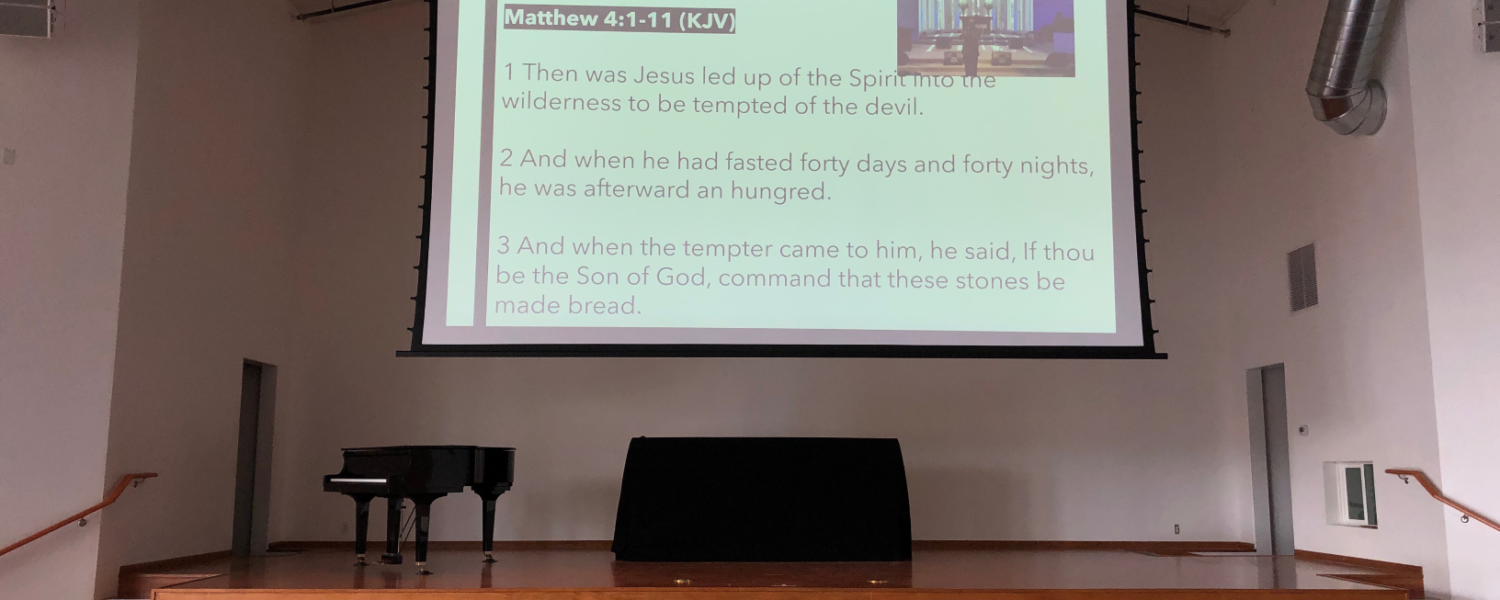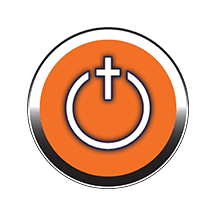By Dave Rodgers
This simple task will become a big deal if you do something wrong. Here’s some advice from a professional manufacturer. Hint – You don’t need to pay the most to get the best.
A church’s projection display is as important as the pulpit is. Count on it; the congregation’s eyes will be on the large projected image as much as they will be on whomever is speaking. In this media age, a visual aid is essential and there is more to choosing your projection screen than meets the eye. This article gives you the rundown on how to choose the right screen without making mistakes in cost or performance.
There are four basic elements of selection to keep in mind. Size determines how large your projection screen will be based on how large your venue is. Aspect ratio is the screen’s “shape.” You’ll want it to match the projector’s aspect ratio. Screen material determines if a matte white surface is appropriate or if a specialty material is required. Format or type determines what type of projection screen it will be (fixed frame, roll-up, or portable).
To make the best selection for each of these criteria, answer these three questions:
- What is the purpose of your screen application? Will it be fixed, roll-up, or portable design?
- What is your environment? How big is your space? Does it or does it not have ambient light control? Are there other factors such as indoor or outdoor use?
- What gear you are using? This determines what aspect ratio, and screen material will be suitable to the type of projector and accessories accompanying the screen.
1. Purpose
Church applications can use either 16:9 aspect ratio for videos, or if it is for laptop and PowerPoint presentations, a 16:10 aspect ratio would be better. The screen could be fixed-frame for dedicated use or in an electric or manual “roll-up” configuration for multi-purpose room applications. If this is to be a portable presentation or there is a need for a non-invasive screen where wall or ceiling installations are impractical, a free-standing portable screen is best.
Which format do you want?
- Fixed-frame screens are ideal for a dedicated wall space. The uniform tension is ideal for short throw and UST projectors.
- Manual or electric “roll-up” screens suit environments where the room is multi-purpose in its use. This format allows for the screen to essentially “go away” when it is not in use. This includes units that mount to walls and ceilings or can actually be integrated into the ceiling itself.
- Free-standing/portable projection screens are ideal for applications where wall/ceiling applications are not practical. Textured walls, high ceilings, or even strict association terms may call for a non-invasive solution.
2. Environment
The most common environmental factor is lighting. While the majority of screen materials are matte white, that works fine as long as you can make the room dark. The drawback is that bright room lighting will wash out a matte white screen. An ambient light rejecting material would be best for such occasions. Size constraints of the venue will also determine the ideal screen size.
According to SMPTE, the ideal minimum distance between the viewer and the screen surface is about 1.5 times the width of the screen itself. The Consumer Technology Association (CTA) recommends that the ideal minimum seating distance from a screen will be three times the screen’s measured height. This means that an 11-foot viewing distance for 100” HDTV screens or a 22” viewing distance for 200” HDTV screens would be appropriate. To bring it into scale, the average size of a home theater screen is 100-120” but seldom larger than 135”. Commercial applications typically involve a projection screen that is 150” or larger.
Get the right screen size. If the screen is too small, it’s not impressive. If the screen is too big, it’s as popular as the first two rows of a movie theater. The longer “throw distance” your projector has, the larger the screen size required.
Determine the right screen material. Depending on the environment, make sure that the material will best fit your application. Here are some general guidelines for determining just that.
- Matte White Materials is the most uniformly ideal. It can be used in most applications but is limited by its inability to reduce the washout effects of ambient light.
- Matte Gray Materials is often confused with ALR screen materials but are more synonymous with matte white materials in their performance. These can enhance black-white levels to assist projectors with lower dynamic range performance, but they are even more vulnerable to the washout effects of ambient light.
- ALR (aka “Gray”, “Black”, “CLR®” or Dark Screen”) is specifically made to enhance picture brightness, color contrast, and black/white dynamic range regardless if it’s for dark rooms or in high levels of room lighting. Since most sanctuaries have a lot of overhead light sources, it’s a good idea to look for a ceiling light rejecting or CLR material.
- Rear Projection Screens are ideal for indoor/outdoor or commercial applications. In addition to handling a degree of ambient light intrusion, it completely eliminates the shadow effect caused by foot traffic passing between the projector and screen.
3. Gear
Since projection is a two-piece video display, it is essential that the projector and screen’s performance specs complement one another. The projector and screen should have the same aspect ratio (screen or image shape). Mismatching the projector and screen’s aspect ratio means that your screen will have a lot of dead space in it.
Match your projector’s Aspect Ratio. It is best to match your projector’s native aspect ratio with that of your projection screen. The aspect ratio is essentially the shape of the projected image. Matching the projector and screen’s aspect ratio ensures that the picture is presented in the most aesthetically pleasing way and with no “dead-space” on either the top/bottom or sides of the projection surface.
Standard Long-Throw, Short-Throw, and Ultra-Short-Throw (UST) projectors may require a specialty material that is specially formatted and tensioned. Always check with the screen manufacturer to verify compatibility.
Other options include acoustically transparent (AT) materials that will allow the sound from your in-wall speakers to breathe through your projection screen just like it does at the big theaters. It just requires a basic breakdown of where you are setting up your screen, how you want to use it, and what electronic gear will be used with it.
Regardless if you have a lot of resources at your disposal or a modest budget, creating the perfect projection display for your congregation just got a whole lot easier.
Dave Rodgers is the marketing manager for Elite Screens Inc., www.elitescreens.com. He has over 20 years of experience in the AV and wireless communications industries.












